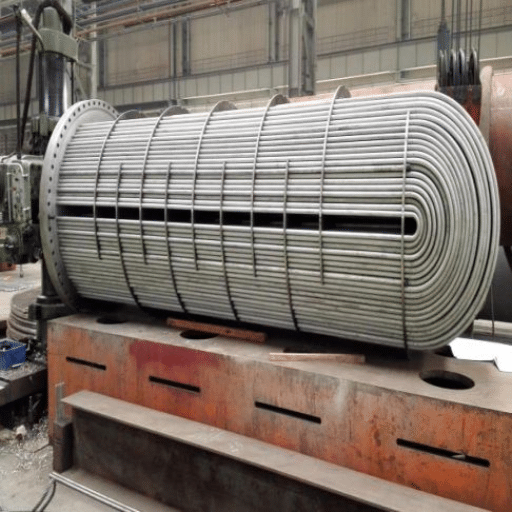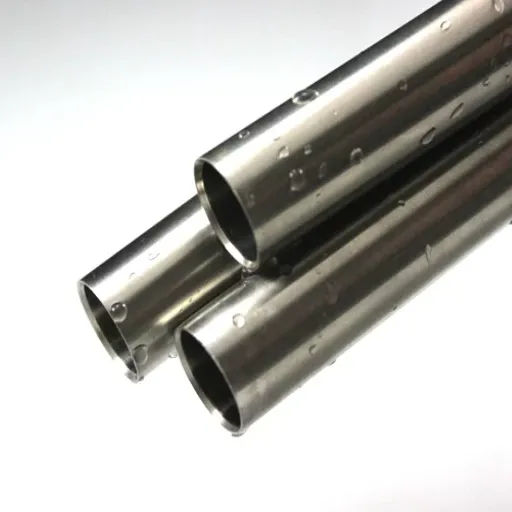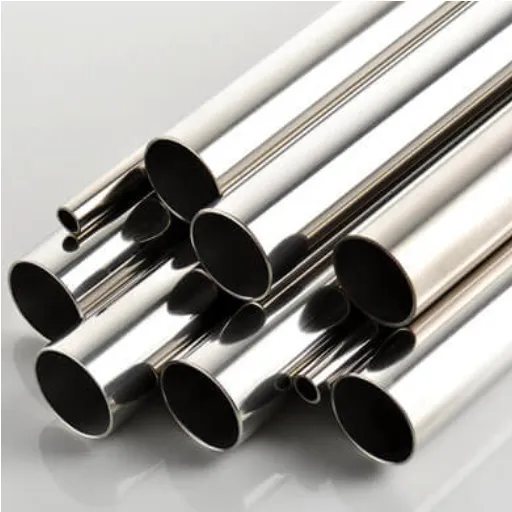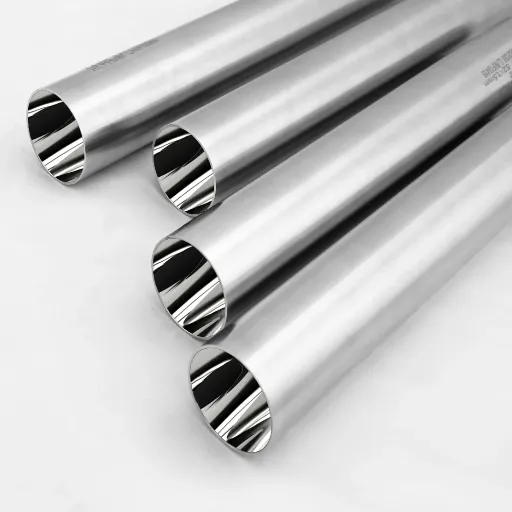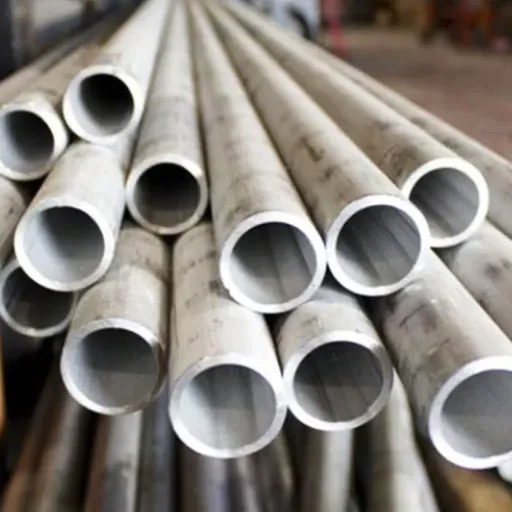In the case of ornaments and accessories, the words “sterling silver” and “stainless steel” are often misleadingly considered to be equivalent, causing many consumers to be puzzled about their actual differences. At the same time, both metals are highly regarded for their aesthetic appeal, hardness, and adaptability, yet it is the knowledge of their distinct characteristics that will allow a person to make a wise choice. Do you want to know what the difference is between these two glittering alloys? The following article will untangle the enigma surrounding “stainless silver” by detailing the distinguishing factors of sterling silver and stainless steel, their main features, and how to select the appropriate one for your requirements. It does not matter if you are a fan of jewelry or just looking to be enlightened; this piece will certainly share some helpful tips about these evolutionary materials.
Introduction to Stainless Steel and Sterling Silver
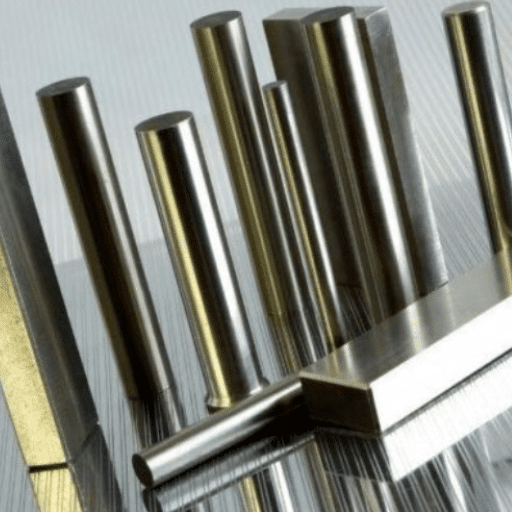
Stainless steel and sterling silver are two contrasting substances frequently utilized in jewelry-making and other industries. Stainless steel is an alloy that consists predominantly of steel, chromium, and a few other types of metals. Its durability is incredible, it does not rust, and it is not too demanding in terms of maintenance. Sterling silver, in contrast, is a precious metal alloy that is made up of 92.5% pure silver and 7.5% other metals, most often copper. It is loved for its shining brilliance and classic beauty but needs more attention to be kept from becoming tarnished.
Key Insight: Ultimately, the decision between the two materials should be based on your likes and dislikes, their future usage, and your financial situation, with stainless steel representing practicality while sterling silver denotes luxury and sophistication.
Definition of Stainless Steel
Stainless steel, which is mainly iron, chromium, and other elements like nickel, carbon, manganese, and molybdenum, is a versatile and durable alloy. The percentage of chromium in the alloy mainly determines the level of stainless steel’s resistance to oxidation and staining; thereby, the stainless steel is termed stainless due to this trait. The usage of this material is not limited to just one industry but rather, it is a universal material that can be found in all sectors due to its properties like the strength, longevity, and low maintenance.
The following are the primary characteristics of stainless steel:
1Corrosion Resistance
Stainless steel does not suffer from rust, tarnish, or corrosion, thus making it perfect for application in highly humid or chemical-exposed environments or even in extreme conditions.
2Strength and Durability
It can bear a lot of pressure and is very long-lasting, thus it can be used in construction, automotive, and heavy-duty industrial applications. Some grades are even heat-resistant.
3Eco-Friendly and Recyclable
Stainless steel can be recycled 100%, so it is less harmful to the environment, and it also can be considered as a material that supports the recycling industry.
4Low Maintenance
The maintenance is quite easy as only some minimal care is needed to keep its appearance and performance, thus it is a good option for daily use.
5Aesthetic Appeal
Besides having a modern and sleek look, it comes with a wide range of finishes from matte to mirror-like polish that can easily match different design needs.
💡 Note: These features make stainless steel to be the material of choice for various applications right from kitchenware and surgical instruments to architecture and transportation.
Definition of Sterling Silver
Sterling silver is an alloy of very good quality, mainly consisting of silver, which has won the whole world over for its beauty, strength and wide application. In contrast to pure silver which is too soft and therefore not suitable for any use, sterling silver is a mixture of silver and another metal usually copper, which contributes to its strength and functionality while at the same time keeping its bright and shiny appearance.
Key Properties of Sterling Silver
1Composition
Sterling silver is made up of 92.5% pure silver and 7.5% other metals, most often copper, which enhances the hardness and resistance to wear.
2Durability
It is strong enough not to bend or wear and therefore is suitable for making items like jewelry and flatware.
3Aesthetic Appeal
The surface of sterling silver is brilliant and shiny which can be polished easily thus giving it an everlasting charm.
4Tarnish Potential
Sterling silver, despite being durable, might develop tarnish on its surface after some time due to chemical reactions with air or moisture but the tarnish can be cleaned and silver restored easily.
5Versatility
Its quality of being able to fit into different categories makes it a favorite material for making all kinds of items from jewelry to decorative objects and even to utensils.
Common Uses of Each Metal
Gold
- ✦ Jewelry (wedding bands, necklaces, bracelets)
- ✦ Electronics (connectors and switches)
- ✦ Investment (bullion and coins)
- ✦ Dentistry (crowns and fillings)
- ✦ Aerospace (spacecraft coating)
Silver
- ✦ Jewelry (rings, earrings, necklaces)
- ✦ Tableware (forks, knives, serving trays)
- ✦ Photography (silver halides in film)
- ✦ Electronics (circuitry and switches)
- ✦ Mirrors (reflective coating)
Aluminum
- ✦ Transportation (airplanes, cars, bicycles)
- ✦ Packaging (foil and cans)
- ✦ Construction (window frames, roofing)
- ✦ Electronics (heat sinks)
- ✦ Furniture (modern designs)
Copper
- ✦ Electrical Wiring
- ✦ Plumbing (water pipes)
- ✦ Roofing (copper sheets)
- ✦ Cookware (pots and pans)
- ✦ Coinage (coin production)
Steel
- ✦ Construction (bridges, skyscrapers)
- ✦ Automotive (car frames and bodies)
- ✦ Household Appliances
- ✦ Tools (wrenches, hammers, pliers)
- ✦ Shipbuilding
Durability and Maintenance
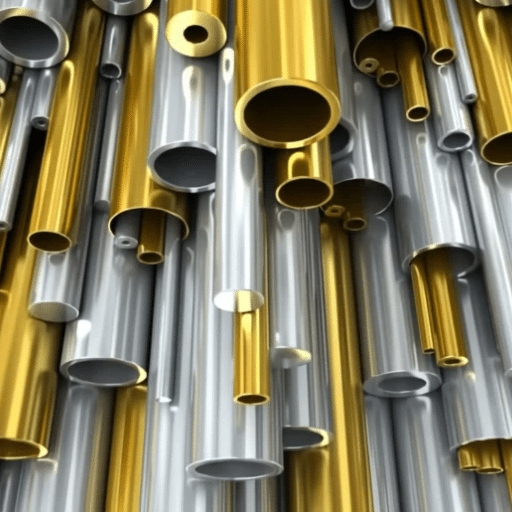
Durability of Stainless Steel
Stainless steel’s extraordinary durability is what gives it the reputation of being the best among the materials and that is the reason why it is widely used in different industries. The following are the main factors contributing to the long life and performance of the steel:
🛡️ Corrosion Resistance
The chromium in stainless steel creates a passive layer of oxide through which it cannot be degraded or rusted, protecting it even in difficult places like the sea or industries.
💪 High Tensile Strength
Its very high tensile strength is the reason why it could be used in almost heavy-duty applications because it would not deform even under a huge amount of stress and pressure.
🌡️ Temperature Resistance
The metal can manage both very hot and very cold environments and thus it is being used in places like furnaces and cryogenic systems.
⏳ Long Lifespan
If taken care of, stainless steel is the material with the longest lifespan compared to others. The longevity of the product compensates for the initial costs.
🧹 Low Maintenance Needs
It may take simple cleaning routines to keep the look and function of the metal over the years.
Durability of Sterling Silver
The sterling silver is very much thought of because of its durability and versatility, hence it is a popular choice for jewelry, decorative items, and utensils. The main factors that indicate the durability of sterling silver are explained below:
⚗️ Composition Strength
Sterling silver is an alloy that contains 92.5% pure silver and 7.5% different metals, which are mostly copper. This mixture is much stronger than pure silver.
✨ Resistance to Wear
The metals in sterling silver give it the ability to resist scratches and wear to a greater extent; therefore, items will continue to look as if they have just been made.
🌟 Tarnish Control
Sterling silver can tarnish, albeit to a lesser degree than pure silver, but if after proper cleaning and protective storage it still has a good shine. New anti-tarnish coatings have further improved resistance.
🔧 Malleability and Toughness
Sterling silver brings to the table a perfect combination of malleability and toughness. It has great daily use resistance power but still can be made into complicated designs.
👥 Lifespan with Maintenance
With the right care—like polishing and keeping away from harsh chemicals—sterling silver can last for a couple of generations, and its value plus aesthetic appeal can be maintained.
Definition of Stainless Steel
Stainless steel, which is mainly iron, chromium, and other elements like nickel, carbon, manganese, and molybdenum, is a versatile and durable alloy. The percentage of chromium in the alloy mainly determines the level of stainless steel’s resistance to oxidation and staining; thereby, the stainless steel is termed stainless due to this trait. The usage of this material is not limited to just one industry but rather, it is a universal material that can be found in all sectors due to its properties like the strength, longevity, and low maintenance.
How to Maintain Each Metal
Sterling Silver
- • Keep in a dry and cool place
- • Clean regularly with a soft cloth
- • Use silver polishing cloth for deeper cleaning
- • Store in anti-tarnish bags
Gold
- • Clean with warm water and mild soap
- • Avoid harsh chemicals like chlorine
- • Store jewelry separately
Platinum
- • Clean with gentle jewelry cleaner
- • Use soft-bristle toothbrush for crevices
- • Professionally polish yearly
Stainless Steel
- • Wipe with soft cloth after each use
- • Use water and baking soda for tough stains
- • Never use abrasive cleaning tools
Titanium
- • Clean with mild soap and warm water
- • Avoid abrasive materials
- • Store properly to maintain appearance
Comparison: Stainless Steel vs Sterling Silver

Stainless steel is durable, tarnish-resistant, and low-maintenance, while sterling silver is elegant, malleable, and prone to tarnish.
Overview of Key Differences
Durability
Stainless Steel: This metal is impervious to wear and tear. In fact, one of the things that make it ideal not only in jewelry but also in applications ranging from construction to food preparation is its very high resistance to scratches, dents, and other forms of physical wear.
Sterling Silver: Sterling Silver is one of the most popular materials for creating beautiful jewelry. However, silver being the softest of all the precious metals gives it only moderate durability and more scratches and bending issues.
Tarnish Resistance
Stainless Steel: Corrosion and tarnishing cannot touch stainless steel nor can they influence the decaying process of the appearance of the steel over time in a significant manner.
Sterling Silver: Silver content makes sterling more susceptible to discolouration and consequently, the necessary cleaning of the metal has to be done on a regular basis.
Maintenance Requirements
Stainless Steel: Its shine may gradually fade away but the material is so easy to clean that it requires only minimal effort to restore its original luster.
Sterling Silver: The polishing and cleaning that silver requires continue to be cutting-edge technology, as it’s still the highest maintenance.
Weight
Stainless Steel: The weight of this metal is more than sterling silver giving it a feeling of being solid and strong.
Sterling Silver: The luster of silver jewelry is one of the reasons why its popularity has not diminished; it is lightweight and comfortable to wear making it the number one choice for fine jewelry.
Appearance
Stainless Steel: Has a shiny and modern appearance and can be finished either polished or brushed. This contemporary style is very much embraced in today’s fashion.
Sterling Silver: Classy and lovely are the two words that perfectly describe the appearance of sterling silver. It is continuously referred to and connected with not only beauty but also elegance and sophistication that are timeless.
Hypoallergenic Properties
Hypoallergenic properties are a must-have for sensitive skin or allergy sufferers when selecting jewelry or accessories. The following points highlight the hypoallergenic characteristics of stainless steel and sterling silver.
Stainless Steel
✓ Nickel Content
Different types of stainless steel are produced with very low nickel release, thus, making them good for sensitive skin. Surgical-grade stainless steel such as 316L is mainly used in the making of jewelry.
✓ Corrosion Resistance
The excellent resistance to rust and corrosion means that stainless steel will not break down and give off irritants over a long period.
✓ Durability
The toughness of stainless steel prevents scratches and other forms of wear and tear that could hold allergens.
Sterling Silver
✓ Purity Levels
Top-quality sterling silver has 92.5% silver, which cuts down on the chances of skin irritation.
✓ Rhodium Plating
A lot of sterling silver products are dipped in rhodium not only to make them hypoallergenic but also to increase their life span.
Tarnishing and Longevity
The tarnishing process and overall longevity of jewelry materials are governed by a number of factors, among which are their composition, environmental exposure, and maintenance. Below are discussed the most important details related to tarnishing and the durability of the different jewelry materials:
Gold
Tarnish Resistance: Pure gold (24K) is very much resistant to tarnishing owing to its non-reactive nature; however, gold of lower karats such as 14K or 18K may tarnish eventually.
Longevity: Gold jewelry can be maintained for decades; in the most cases, it gets passed on generation after generation as an heirloom.
Stainless Steel
Tarnish Resistance: Stainless steel nearly does not get tarnished at all and the reason for that is its protective layer of chromium oxide that prevents the metal underneath from getting oxidized.
Longevity: Very tough, stainless steel can endure years of wearing with very little signs of wear and tear.
Sterling Silver
Tarnish Susceptibility: Sterling Silver gets tarnished with exposure to air and moisture, which leads to a chemical reaction with sulfur compounds.
Longevity: With a routine of cleaning and suitable storage the lifespan of sterling silver can be significantly prolonged, thus it can be considered a durable choice for daily use.
Platinum
Tarnish Resistance: Platinum is naturally resistive to tarnish and so it shines forever without the need for metal coatings or special treatments.
Longevity: With the utmost durability, platinum is in fact one of the most durable precious metals, besides being very expensive.
Copper-Based Alloys
Tarnish Susceptibility: Copper-containing materials like brass and bronze get easily tarnished due to oxidation that happens when air gets to the metal.
Longevity: Copper alloys, though not as durable as precious metals, can maintain their lustre with regular polishing and proper care.
Jewelry Options: Stainless Steel vs Sterling Silver
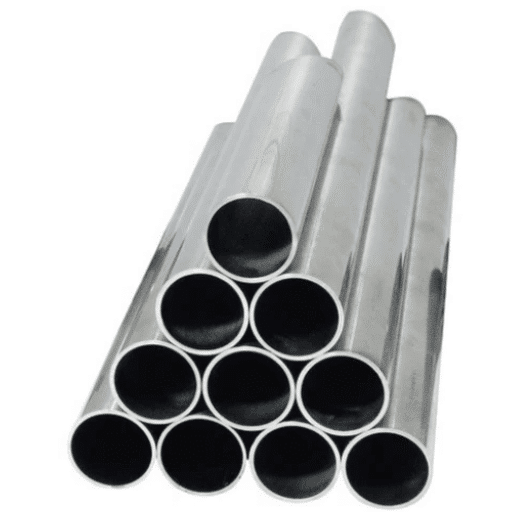
When it comes to picking stainless steel or sterling silver for jewelry, it is very important to weigh the factors which are durability, cost-effectiveness, and look, among others. The materials have been compared in detail below:
Detailed Comparison
🔒 Durability
Stainless Steel: Very resistant to scratches, dents, and corrosion. Thus, it is suitable for wear every day and for an active lifestyle.
Sterling Silver: On the other hand, it is softer and more easily scratched and bent, and the wearer has to be careful to keep the metal shape and surface finish.
💰 Affordability
Stainless Steel: Its low production cost and abundance as a material usually make it the more affordable option.
Sterling Silver: The higher price is due to the metal’s high silver content, which is a statement of the metal’s value as a precious one.
✨ Appearance
Stainless Steel: The material has a sharp, a little bit futuristic look and can come in the either polished or matte finish. The shine that it has gets even better with time since the maintenance is little.
Sterling Silver: The metal is famous for its bright brilliance and traditional style, but it needs daily polishing to be free from tarnish.
🏥 Hypoallergenic Properties
Stainless Steel: In most cases, the manufacturing of stainless steel jewelry uses hypoallergenic grades which makes it a good choice for people with sensitive skin.
Sterling Silver: Silver is generally a non-allergic metal, but its derivative alloy might cause mild reactions due to the presence of other metals like nickel.
🧹 Maintenance
Stainless Steel: Almost no maintenance is needed; the more the wear the less the cleaning needed; it is stubbornly non-tarnish and only basic care is needed to keep it clean.
Sterling Silver: The metal needs regular cleaning and polishing to keep its shine and to avoid the tarnish that is caused by the air and moisture.
💡 Key Takeaway: A good understanding of these differences will enable the buyer to select the material that suits his or her style and lifestyle the best.
Stainless Steel Jewelry
Stainless steel jewelry is gaining more and more popularity as a choice because of its durability, contemporary look, and low price. The following are major points and advantages of using jewelry made from stainless steel:
Durability
Stainless steel offers great resistance against scratches, dents, and daily wear, which makes it an ideal material for the production of jewelry pieces that last a long time.
Corrosion Resistance
Stainless steel’s high chromium content makes it resistant to tarnish and corrosion even under conditions of moisture or sweat.
Hypoallergenic Properties
Stainless steel is usually hypoallergenic, thus, it is appropriate for persons with sensitive skin or allergic reactions to some metals.
Affordability
Stainless steel, unlike precious metals, such as gold and silver, is a more economical option but still gives a refined look.
Low Maintenance
Stainless steel jewelry can be easily cleaned, but does not require polishing. It will maintain its luster without much effort, thus, it is perfect for busy professionals.
🌟 Summary: The above-mentioned properties are the reasons that make stainless steel a favorite choice among modern jewelry wearers of different age groups.
Sterling Silver Jewelry
Sterling silver jewelry is an awesome and outstandingly beautiful option that presents both charm and multifunctionality. Composed of 92.5% pure silver and 7.5% metal alloys, this material keeps a good balance between the two properties of beauty and strength. The following are the most important characteristics of sterling silver jewelry:
Always Elegant
The shiny silver metal is the main reason why it is a favorite for both modern and traditional jewelry designs and thus will forever remain in fashion.
Long-lasting
It is a precious metal but still can be used daily without any visible signs of wear and tear, gradually becoming more beautiful.
Non-allergic
Sterling silver is the safest choice for those with delicate skin as it is much less likely to trigger allergic reactions than even some other cheaper metals.
Very Customizable
Silver being a soft metal can be shaped into very detailed and one-of-a-kind creations that will fit different tastes and likes.
Value Holding
A precious metal is sterling silver that doesn’t lose its worth and thus an investment is both chic and smart.
🌟 Note: The above-mentioned qualities help in making sterling silver a much-loved material in the field of jewelry, even today.
Silver vs Stainless Steel Jewelry: Which to Choose?
When it comes to jewelry, the choice between silver and stainless steel ultimately comes down to your personal preferences, budget, and lifestyle. Recent Google data has shown that there has been an increase in the number of searches for “affordable durable jewelry,” indicating that stainless steel is slowly gaining acceptance for its remarkable strength and low cost. Stainless steel jewelry is less likely to tarnish, scratch, and rust, hence it is perfect for daily wear and people with active lifestyles. Moreover, it requires little maintenance and provides a neat, contemporary look.
Sterling silver, however, attracts consumers who want nothing less than classic beauty and refinement. Google Trends points to a steady demand for “sterling silver for special occasions,” which only goes to emphasize its connection with high-quality workmanship and luxury. Silver, despite being prone to tarnishing over the years, can always be polished and so loved by the users due to its radiant shine that goes with every outfit. In addition to that, being a precious metal, silver has an inherent worth and thus offers a better long-term investment than stainless steel.
Eventually, if you are after a product that is tough, requires little maintenance, and has a modern look, stainless steel could be your choice. On the other hand, if you resonate with the classics, are looking for versatility, and prefer the allure of precious metals, then sterling silver is your way to go. Considering these factors along with your own preferences will guide you in making the right choice.
Choosing the Right Metal for Your Needs

Metal for Your Needs
Before making a decision on whether to go with sterling silver or stainless steel, it is vital to examine multiple factors so that you end up with the best choice for your needs. Five main points to judge are provided below with explanations and key points to each one:
1Durability
- • Stainless steel is very hard to get scratches, dents, or tarnish so that it can be used daily without problems.
- • Sterling silver, on the other hand, is durable but softer than stainless steel, so it gets scratches and tarnishing more easily thereby needing polishing often.
2Maintenance
- • Stainless steel is practically maintenance-free and stays polished and bright for a long time without any special care.
- • Sterling silver needs constant care as it can lose its luster from air and moisture exposure if not treated properly over time.
3Style and Aesthetic Appeal
- • Sterling silver has a classic, lustrous luxury that is in demand for fine jewelry and traditional designs.
- • Stainless steel gives a modern and sleek look that goes with the contemporary and minimalist styles.
4Cost and Value
- • Stainless steel is economical and offers great durability along with everyday use at a low cost.
- • Sterling silver costs more but still has the intrinsic value of being a precious metal and can even rise in value over time.
5Versatility
- • Sterling silver is more versatile and can be made into sophisticated designs easily thus suits personalized or detailed pieces best.
- • Stainless steel is not that easy to shape but it is super strong and functional for simple and sturdy designs.
📌 Final Note: Listing these pros and cons of durability, maintenance, style, cost and versatility alongside your own personal preferences you will easily arrive at the metal that matches your lifestyle and values the closest.
Factors to Consider
There are several factors that are very important to evaluate when choosing between sterling silver and stainless steel. The following are key factors that are considered together with facts and figures to assist you in making your decision:
⚡ Durability
Sterling silver has a softer composition, so it gets easily scratched and dented over time.
In contrast, stainless steel is extremely durable and resistant to impact, scratches, and corrosion, thus making it perfect for everyday wear or heavy usage.
🧹 Maintenance
Sterling silver needs constant cleaning and polishing to avoid tarnishing, particularly in wet places.
Stainless steel is a low-maintenance metal that only needs to be cleaned occasionally to keep it shiny and looking good.
🏥 Hypoallergenic Properties
Often sterling silver considered hypoallergenic when alloyed with copper, however, lower-quality silver might contain nickel that can cause allergies.
Stainless steel is generally considered hypoallergenic but some types may cause skin irritation in allergic people if nickel is present.
💰 Cost
Sterling silver is usually more expensive because of its greater purity and value as a precious metal.
Stainless steel is a budget-friendly option that gives you excellent quality at a lower price.
✨ Style and Aesthetic
Sterling silver is known for its classic and lustrous look, which is a reason that it has been the main choice for high-end jewelry and elegant design.
Stainless steel has a contemporary and minimalistic appearance that often features an array of finishes ranging from matte to shiny.
💡 Conclusion: A thorough evaluation of these aspects can lead you to a decision that not only fits your lifestyle but also fulfills your jewelry requirements.
Final Thoughts on Sterling Silver and Stainless Steel
When it comes to making the decision between sterling silver and stainless steel, I personally think it is a matter of the individual’s tastes and how the qualities of each metal correspond to the individual’s requirements. If I am looking for a classic beauty and do not mind putting in a little extra effort, I will definitely go for sterling silver. For a long-lasting material and a trendy appearance with almost no care, I would pick stainless steel. They both have their advantages, so it’s simply a matter of selecting the one that matches my way of living.
References
- Dartmouth Toxic Metals Superfund Research Program:
Provides detailed information on silver alloys, including their composition and uses. Link to source
- MDPI (Materials Journal):
Discusses innovations in stainless steel, including antibacterial properties and applications. Link to source
- USGS (United States Geological Survey):
Offers insights into silver’s properties and its substitution with stainless steel in various applications. Link to source
Frequently Asked Questions (FAQ)
❓ What is the difference between stainless steel and sterling silver?
Stainless steel is an alloy primarily made of iron, chromium, and nickel, known for its strength and resistance to rust, while sterling silver is composed of 92.5% pure silver and 7.5% other metals, usually copper. The key difference lies in their composition and properties; stainless steel is more durable and less prone to tarnish than sterling silver, which can tarnish over time due to oxidation.
❓ Is stainless steel jewelry hypoallergenic?
Yes, stainless steel jewelry is often considered hypoallergenic, making it a suitable option for individuals with sensitive skin. The chromium content in stainless steel helps to prevent rust and tarnish, reducing the likelihood of allergic reactions that can occur with other metals.
❓ How does sterling silver tarnish compared to stainless steel?
Sterling silver tarnishes when exposed to air and moisture due to the oxidation of its copper content, resulting in a dull appearance. In contrast, stainless steel is much more resistant to tarnishing, maintaining its shine and luster even with regular wear and tear.
❓ What are the pros and cons of stainless steel vs sterling silver?
The pros of stainless steel include its durability, resistance to tarnish, and affordability, making it a popular choice for contemporary jewelry. However, sterling silver offers a classic, elegant appearance and is a precious metal with intrinsic value. The cons of stainless steel include its heavier weight and less malleability compared to sterling silver, which can be shaped into intricate designs.
❓ Can I choose stainless steel for men’s jewelry?
Absolutely! Stainless steel is a great choice for men’s jewelry due to its rugged durability and modern aesthetic. It can withstand daily wear and is less likely to show scratches or damage, making it ideal for bracelets, rings, and other jewelry pieces.
❓ What makes sterling silver a precious metal?
Sterling silver is considered a precious metal because it is composed mostly of pure silver (92.5%) and has significant value in the market. Its rarity, along with its beautiful luster and versatility in jewelry designs, contributes to its classification as a precious metal.
❓ What are the differences between sterling silver and stainless steel jewelry?
The main differences between sterling silver and stainless steel jewelry lie in their composition, durability, and maintenance. Sterling silver is softer and more prone to scratches and tarnishing, requiring regular polishing to maintain its shine. In contrast, stainless steel is more durable, resistant to tarnish, and easier to care for, making it ideal for everyday wear.
❓ Why should I choose stainless steel jewelry over sterling silver?
Choosing stainless steel jewelry over sterling silver can be advantageous due to its long-lasting durability and lower maintenance requirements. Stainless steel is less likely to tarnish, making it a practical option for those who prefer hassle-free jewelry. Additionally, it is often more affordable, allowing for a broader jewelry collection without breaking the bank.

